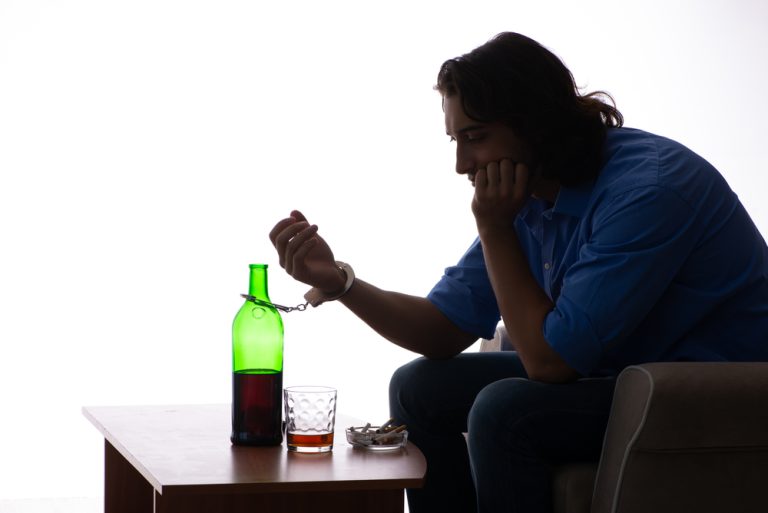Being able to have a few drinks without feeling any effects may seem like a good thing. In fact, if you need to drink increasing amounts of alcohol to feel an effect, it could be a sign you have a problem with alcohol. A common misconception among casual drinkers is indeed that price directly reflects the quality of wine or liquor. However, taste tests and studies frequently demonstrate that price alone doesn’t guarantee better flavor.

Although moderate drinking may have positives for specific illnesses, its verified damage, especially in cancer, might exceed these advantages. Ultimately, the decision to drink alcohol is a personal one, but it should be an informed decision. By understanding the true effects of alcohol, free from myths and misconceptions, individuals can make choices that align with their health goals and personal values. It’s also crucial to recognize that for some individuals, no amount of alcohol is safe.
Hangovers are caused by the amount of alcohol consumed and the rate at which it is consumed, not by the kind of alcohol consumed. While metabolizing alcohol, the liver cannot perform its normal functions, one of which is keeping the blood sugar at a normal concentration. The results of this state called hypoglycemia, or lower than normal blood sugar. The change in blood vessels, as mentioned in Myth 3, can cause headaches. Lastly, a hangover is actually a “mini-withdrawal.” When the central nervous system is released from the depressed state, the opposite state develops-feeling edgy and irritable. No matter how much a guy drinks, if you drink the same amount as your male friends your blood alcohol concentration will tend to be higher, putting you at greater risk for harm.
On the other hand, exercise can help with a hangover, as it increases the release of endorphins, reducing pain and providing a feeling of well-being. Luckily, we’ve asked one of our very own alcohol research experts, Andrew Misell, to bust some of the more common misconceptions around alcohol and give us what are some common myths and facts about alcohol the full picture. However, a review of studies published from 2013 to 2019 suggests that people with lower socioeconomic status may be more likely to die from alcohol use disorder. You don’t necessarily need to be drunk for alcohol to affect your decision making abilities.
As theNational Institute on Drug Abuseexplains, 40 to 60% of people in recovery from addiction experience setbacks or relapse. The medications used in rehab are FDA-approved for specific uses. They might be used to calm cravings while your body goes through detox, or help a person with recovery maintenance.
You’ll be more prepared to navigate business settings and questions without alcohol interfering with your mental function. You can choose to stop drinking and remain sober, whether it’s a decision you make for your health or other reasons. Many insurance plans cover at least a part of drug treatment. If you are below a certain income threshold, you may be eligible for public healthcare through Medicaid for certain treatment centers. Some people would rather try to fight through their addiction on their own than seek treatment because they believe rehab is a waste of time. She loves scouring the internet for delicious, simple, heartwarming recipes that make her look like a MasterChef winner.
From low space at 180 miles high, the Great Wall is not the only visible object, nor is it the most distinguishable. It turns out our nation’s first president wasn’t rocking a pair of wooden chompers. The historians at the Washington Library say that while George Washington did suffer from dental problems, his dentures were composed of ivory, gold, lead, and even other human teeth—but never any wood.

Sober phobia is a real phenomenon that can prevent people from choosing to stop drinking. This might mean outdoor activities, meetups with friends, and listening to shows or music in a way you hadn’t been able to do before, with the numbing effects of alcohol at play. You can find many other activities to fill https://42ink.fr/?p=17733 your life without drinking. What is considered “fun” or “boring” is quite subjective, and you can make your life what you want it to be.

Substance use disorders are Sober living home chronic and relapsing conditions that involve significant changes in brain chemistry, rewiring the brain’s reward system and decision-making processes. Moreover, it’s perfectly acceptable to choose not to drink alcohol at all. Many people lead fulfilling social lives and manage stress without alcohol, and there’s no shame in abstaining. Popular media often portrays drinking as an inherently social and enjoyable activity. While alcohol can indeed act as a social lubricant for some people, it’s important to recognize that this isn’t universally true. These standard servings all contain approximately the same amount of alcohol.
Addiction happens to people across all demographics, from all walks of life, and no one is immune. Many people believe addiction results from weak willpower or lack of morals. While not everyone who experiments with substances becomes addicted, significant risks are involved.
You may think that mixing an energy drink with your cocktail will help combat alcohol’s drowsiness effects. Normally, your body cycles through light and deep phases of sleep. Alcohol inhibits refreshing REM (rapid eye movement) sleep and later on causes “REM rebound,” with nightmares and trouble sleeping. Alcohol interferes with normal brain activity, no matter how you feel when you drink. For well-meaning friends and family members, this can be an excuse to turn a blind eye and allow someone with an addiction to continue their destructive behaviors until someone gets hurt. If you are like most people, you may have pictured a teenager slumped on a park bench, dressed in dirty, wrinkled clothes.
At times addiction is portrayed as an incurable and lifelong condition. This leads people to believe that once someone becomes addicted, there is no hope for a full recovery. What matters most in determining the level of intoxication is the total amount of alcohol consumed, regardless of whether it comes from beer, wine, spirits, or any other form of alcohol.
اولین نفر باشید دیدگاهی ثبت میکند
دیدگاه های کاربران